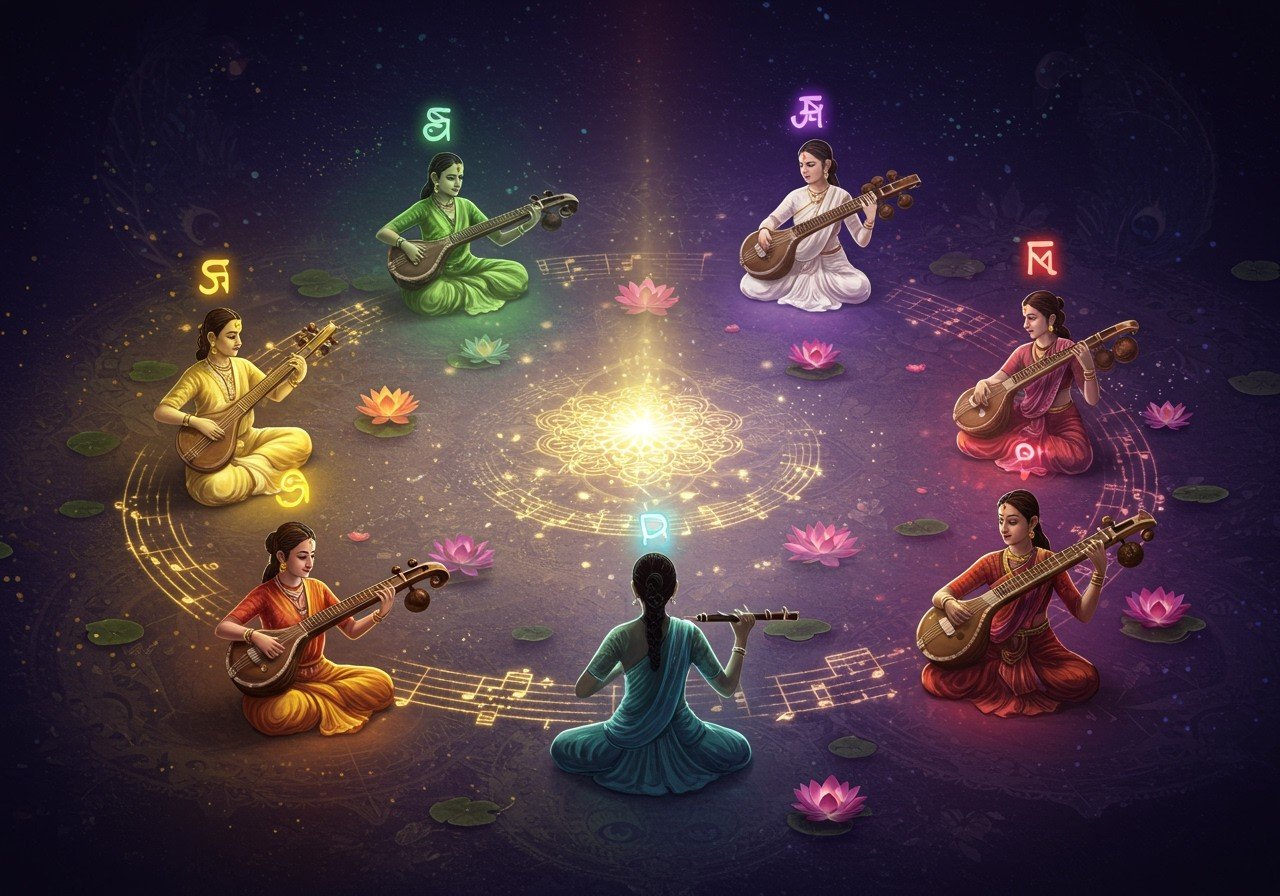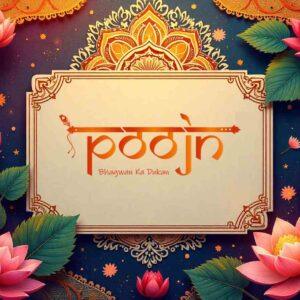
Indian music possesses a rich tapestry of history and tradition, with svara at its very heart. Serving as the foundation of Indian classical music, svara shapes melody, rhythm, and the emotional landscape of musical expression. This guide will illuminate the cultural significance and historical roots of svara, unveiling its unique qualities, from tonal nuances to the art of pronunciation.
Delving into the Essence of Svara
Svara, meaning a musical note, is the fundamental building block of Indian classical music. It’s the essence from which melodies and ragas, the soul of musical compositions, are born. Seven primary svaras, collectively known as ‘Sapta Svara‘, form the basis of this system. These are Sa, Re, Ga, Ma, Pa, Dha, and Ni. While these notes have parallels in Western music, they hold unique microtonal intricacies that set them apart.
- Sapta Svara and Western Parallels: While comparable to the Western “do, re, mi,” the sapta svara (Sa, Re, Ga, Ma, Pa, Dha, Ni) possess subtle differences in intonation and cultural context that give Indian music its distinctive character. These seven notes are the foundation upon which the vast repertoire of Indian classical music is built.
- Structure and Emotional Depth: Svara provides both structure and emotional depth to music. Unlike Western musical notes, svaras emphasize melodic development and emotional expression, playing a vital role in both vocal and instrumental performances, enriching the musical experience. They are not merely pitches but carriers of emotion and spiritual meaning.
The Art of Pronunciation and Articulation
Mastering the pronunciation of the seven primary svaras—Sa, Re, Ga, Ma, Pa, Dha, Ni—is paramount for anyone venturing into the world of Indian classical music. Each svara carries its own unique phonetic subtleties, deeply embedded in tradition.
Across India’s diverse regions, you’ll encounter delicate variations in svara pronunciation, adding unique flavors to musical styles. A musician from the north might articulate ‘Re’ with a slightly different nuance than a musician from the south, reflecting the rich tapestry of regional musical traditions. For those new to Indian classical music, mastering these nuances can be challenging. Traditional teaching methods, with their emphasis on listening and repeating under the guidance of a Guru, offer invaluable support in developing an intuitive grasp of each svara’s sonic character.
To refine articulation, singers and instrumentalists can engage in dedicated practice. Repeatedly singing or playing a single svara helps fine-tune pronunciation, breath control, and intonation, capturing the true essence of each note.
In vocal music, precise pronunciation enhances clarity and expressiveness, while instrumentalists must focus on achieving resonance—not just hitting the right note, but feeling the svara resonate within the instrument itself.
Playing Svara: Techniques and Dedication
Playing svara on instruments like the sitar, veena, tabla, or flute demands skill, practice, and deep dedication. Each instrument offers a unique pathway to express svara, adding to the richness and diversity of Indian musical performances. Consistent practice cultivates muscle memory and an intimate familiarity with each note. Listening intently to seasoned musicians enhances one’s understanding of subtle variations and nuances.
Vocalists integrate svara into their performances with precision and emotional depth. Vocal exercises refine pitch control and expression. Improvisation allows vocalists to explore the myriad ways of presenting a svara, infusing traditional compositions with personal artistry.
Improvisation is a cornerstone of Indian music, where musicians explore svara to create unique melodies, seamlessly blending tradition with individual interpretation.
To incorporate svara into contemporary compositions while preserving its traditional essence, musicians must strike a balance between innovation and respect for cultural roots. By understanding the profound role of svara, performers can create music that resonates deeply with audiences both within India and globally.
A mindful approach to practice deepens the musician’s connection with svara. Consistent effort and dedication unlock a profound understanding of this fundamental musical element.
How Poojn Supports Your Musical Journey
At Poojn.in, we understand the spiritual connection musicians have with their craft. We offer a curated collection of items to enhance your musical journey and seek divine blessings for your practice. Browse our Poojn Stores for:
- Pure brass bells (ghanta): These bells produce the perfect svara for ritual sounds, enhancing your spiritual practice.
- Traditional veena strings: Crafted from high-quality materials, our veena strings resonate with authenticity and tradition.
We ensure secure packaging and pan-India delivery, preserving the purity and quality of these sacred items. For musicians and students preparing for Saraswati puja or instrument blessing ceremonies, our products adhere to the highest standards of authenticity.
Reach out to us at 03369029784 or WhatsApp 9476142738 to learn more about our musical puja items. Our team is dedicated to helping you select the perfect items based on your specific musical and ritual needs.
Visit www.poojn.in to explore our complete collection of musical puja items. We offer secure online payment and convenient doorstep delivery.
Embracing the Svara Journey
The journey to master svara in Indian classical music is both deeply rewarding and enlightening. It connects us to a rich heritage while fostering our unique musical voice. By focusing on pronunciation, articulation, and dedicated practice, we honor the roots of our music and ensure its vibrant future. Svara is more than just a note—it’s a gateway to emotion, culture, and boundless creativity. Whether you’re a vocalist or instrumentalist, embracing svara requires patience and unwavering dedication. Listening to the masters, practicing regularly, and exploring improvisation are integral parts of this enriching journey.
As you delve deeper into the world of svara, remember that every note is a vessel for a story, a feeling, or a cherished tradition. By blending reverence for cultural heritage with personal expression, you create music that resonates profoundly with yourself and your audience. Let svara be your guide to new musical heights, enriching your performances and deepening your connection to the timeless art of Indian classical music.
Understanding Svara: Frequently Asked Questions
What is Svara in music?
Svara in music signifies the notes within a musical scale. It’s a core concept in Indian classical music, representing distinct pitches and forming the basis of melodic expression.
How do I play Svara?
Playing Svara involves understanding the nuances of musical scales and practicing precise pitch and timing. Learning under the guidance of a skilled music teacher is highly recommended, and using instruments like a harmonium or keyboard can be beneficial for grasping the notes accurately. You can also find a variety of instructional resources online and in holy books available at Poojn.in.
What is the role of Svara in Indian music?
In Indian music, Svara forms the foundation of melodies and intricate compositions. Musicians utilize Svara to create diverse ragas, which are unique musical patterns or frameworks, each evoking a specific mood or emotion. You can find a variety of decorative items related to music and ragas on Poojn.in.


